Just look at it! Everything is wrong with this bike! It costs £5,500 but is made of metal. It has a single pivot suspension system – surely that’s a bad idea? And what’s that? 29 inch wheels, it cannot possibly work! Can it? We hammer some direct lines on the Orange Stage 6 to find out more.
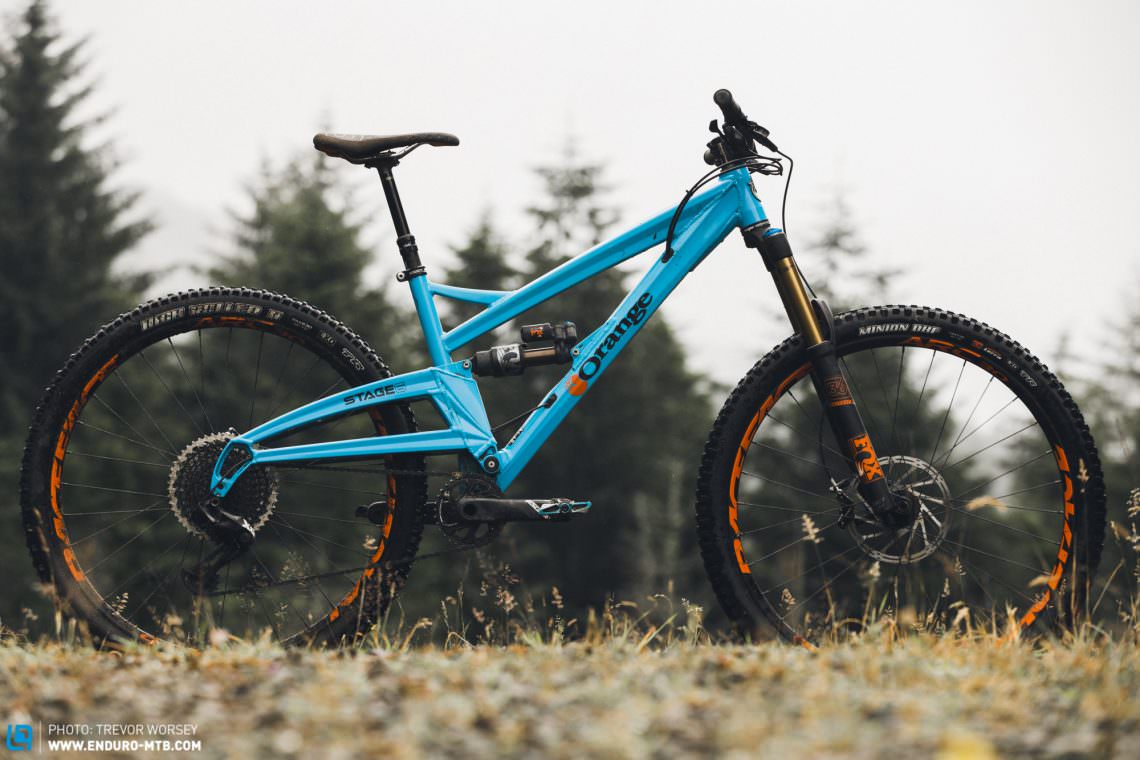
When it comes to mountain bike silhouettes, there can be few as easily identifiable as that of bikes from UK brand Orange. Still manufactured in-house in Halifax, the distinctive single pivot form and unique folded monocoque swingarm have reached cult status. The Stage 6 is Orange’s latest big-hit enduro race bike, a pumped up version of the most excellent Stage 5 trail bike, with 160/150 mm of travel and more aggressive geometry. The Orange Stage 6 is available in three models, the £5,500 Stage 6 Factory as tested here, a more affordable £4,500 RS model with RockShox suspension and XO1 11-speed drivetrain, and the £5,500 Limited Edition model for those who prefer Shimano and Hope components.

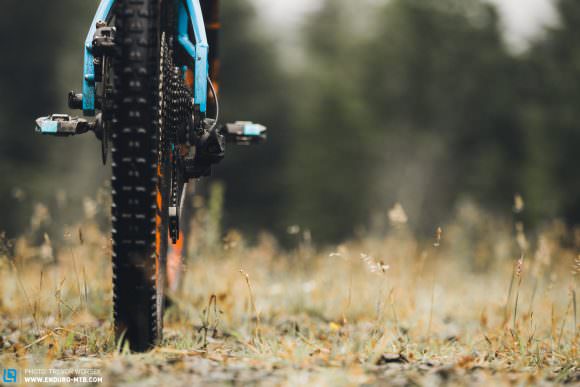


A Orange Stage 6 Factory build that a hardcore rider would choose
When it comes to the components of the Orange Stage 6 Factory, well, someone has been doing their homework. The build kit is a dream spec for a hardcore rider, there’s literally nothing that we do not like, no hidden gremlins, shit headsets or sneaky cost cutting. The all-important suspension is FOX’s finest, a Boost 160 mm Factory Kashima 36 on the front and the highly tunable FOX X2 Factory on the rear – a powerful combination on any bike. Braking is taken care of with the SRAM Guide Ultimate brakes with 200/180 mm rotors, which we think are the best out there for aggressive trail riding – offering huge bite with precise modulation and a perfect lever feel. The carbon Race Face SIXC 35 20mm rise bar sweeps to a full 800 mm and is a perfect match to the Race Face Atlas 35mm stem – this is a cockpit to get excited over. The 12 speed SRAM XO1 Eagle drivetrain gives a huge ratio to haul up the hills, especially with the 32 tooth chainring. The build is finished with Hope PRO4 hubs laced to Race Face ACR30 rims, rolling on team favourites Maxxis Minion DHF / High Roller II tyres. Bottle cage users will be bang out of luck though. To be honest, this is damn close to the build we would choose – even the Race Face Half Nelson grips are nice!

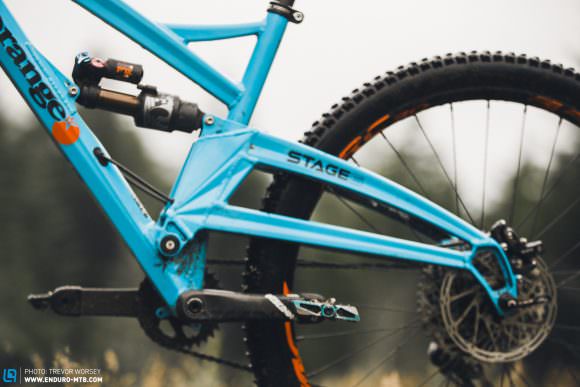

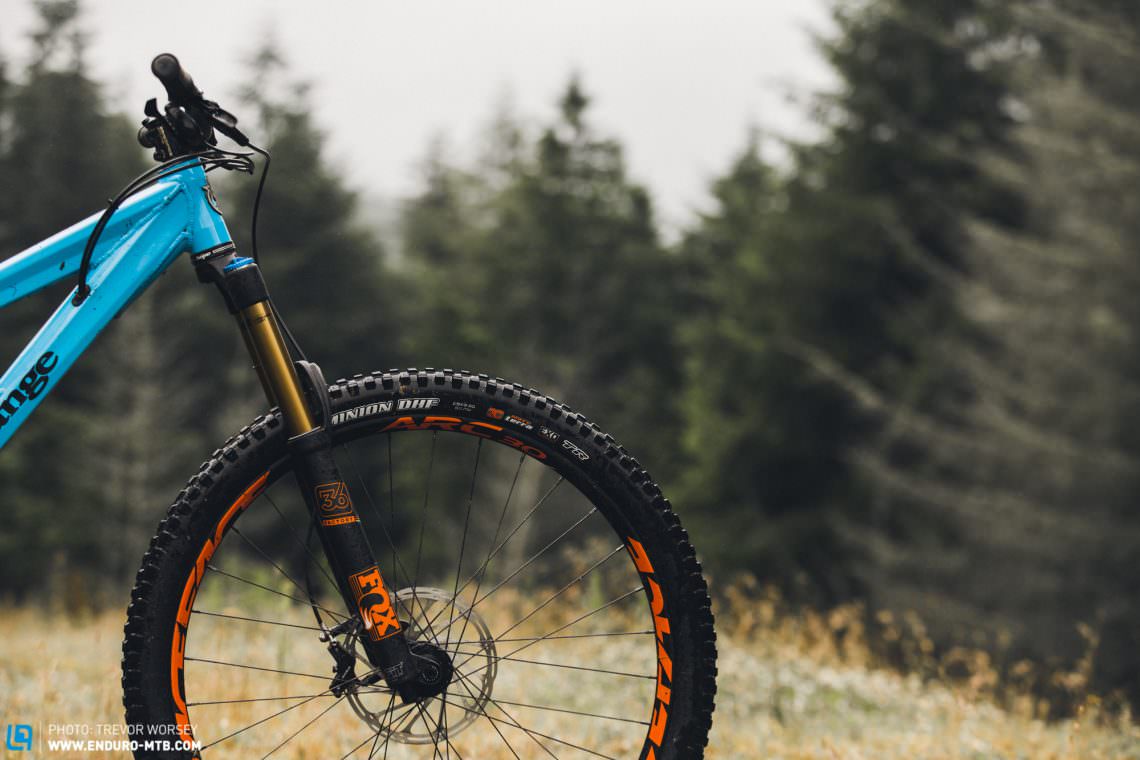
Orange Stage 6 Geometry – evolution not revolution
When it comes to the geometry, Orange have always championed evolution, not revolution. Over the years the models have been tweaked a little here, stretched a little there, nothing radical, but always keeping generous sizing – our 178 cm test rider was riding the size large. A 462 mm reach gives a nice stretch for climbs, and the long 450 mm chainstays provide huge stability, keeping the rider centralised and the front wheel weighted. We hope the age of ultra-short chainstays is almost over, and more and more manufacturers are catching on to the improved front wheel traction that longer chainstays can bring. The 335 mm bottom bracket height is low, without being a threat to rocks, and the 65.5° head angle nods at the bikes big hitting aspirations. The 74.5° seat angle is just about steep enough, though we did find we were running the seat further forward in its rails to improve the pedalling angle. We really like the low standover height, even our hobbit-legged tester was able to upsize to the Large Orange Stage 6 and still have plenty of seat tube to work with. The low slung top tube allows you to get over the bike on the steeps and really push it into turns.
| Size | M | L | XL |
|---|---|---|---|
| Seat tube | 17 “ | 18 “ | 20 “ |
| Top tube | 594 mm | 613 mm | 632 mm |
| Head tube | 100 mm | 110 mm | 120 mm |
| Head angle | 65.5° | 65.5° | 65.5° |
| Seat angle | 74.5° | 74.5° | 74.5° |
| Chainstays | 450 mm | 450 mm | 450 mm |
| BB Height | 335 mm | 335 mm | 335 mm |
| BB Height (from axles) | -35 mm | -35 mm | -35 mm |
| Wheelbase | 1223 mm | 1245 mm | 1266 mm |
Riding the Orange Stage 6
We can already hear the naysayers, like all the best cult brands Orange has always been a brand that attracts die-hard fans and vocal critics. The first and most common is “man, that must weigh a ton”. Orange have been working hard to trim down their monocoque frames, and the big hitting Stage 6 now has less fat on it than a butcher’s dog, coming in at 14.22kg. Some dislike the industrial looking design, but any Kardashian diva behaviour is soon silenced when you notice the huge mud clearance and the fact that it’s the easier to clean frame on the market, hose, brush, done.



It took a few rides to get the FOX X2 setup correctly, given its million and one options, but finally, we ended up at a pressure of 168 psi, 5 clicks of HSR, 4 clicks of LSR, 3 clicks of LSC and 2 clicks of HSC. This setup seemed to extract maximum traction from the single pivot while retaining enough pop for quick dogfighting air missions. So how does it ride? Within the first 10 meters, you know full well that the ride is going to be typically Orange, and that’s a very good thing indeed. The single-pivot still has many fans, and with the X2 shock and pivot placed just above the chainring, pedal bob seems very well controlled. You can feel a tug on the pedals from the suspension when sprinting up short technical climbs, and if you bury the rear brake lever on steep descents the rear becomes far less active. But, off the brakes, magic happens – the suspension is so fluid and fizzing with feedback that every imperfection in the trail is a potential jump, every compression a chance to rail. You start to ride differently, making the most of the suspension and minimising the negatives, braking harder and earlier and hitting technical sections off the brakes – it howls at you to be a better rider.
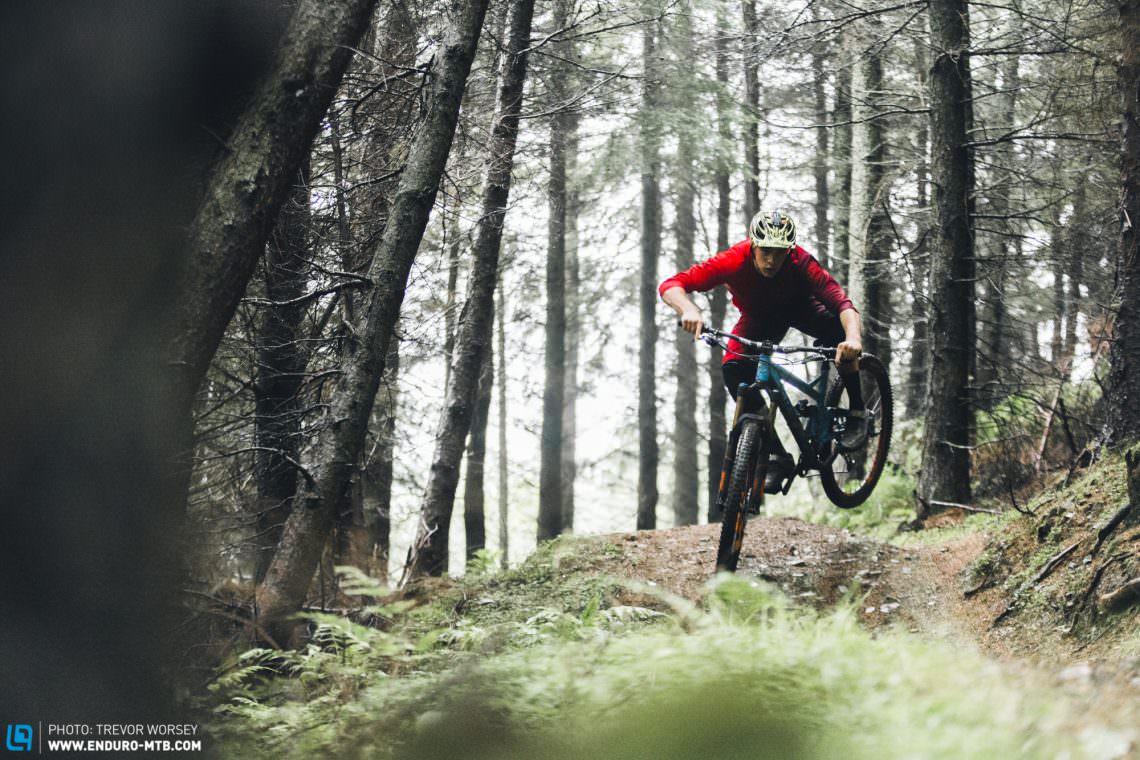
If you’re expecting a plush and easy ride, you will be disappointed, the Orange Stage 6 will potter along if needs be, but it really wants to go fast, the ride is raw and attacking, getting better the more you white knuckle it. It’s a bike for hardcore riders who are not afraid to roll their sleeves up and get stuck in, those looking for a refined cruiser would be better served elsewhere. Stiffness through the rear end is ridiculously high, the big mono stay clamps the rear wheel like superman holding the last pint of a big night – while this can rob a little grip in flat turns, it holds an off-camber line like a dog on a rabbit. There are many bikes that are more neutral, and probably faster under braking, but few that are as fun to rally hard. The 29-inch wheels really suit the platform too, the loud Hope freehub howls like a firework as it thunders between corners. It’s not just the freehub that’s noisy though, we would love to see some wrapping around the lower chainstay as the chain whips like a demented drummer on rocky trails.
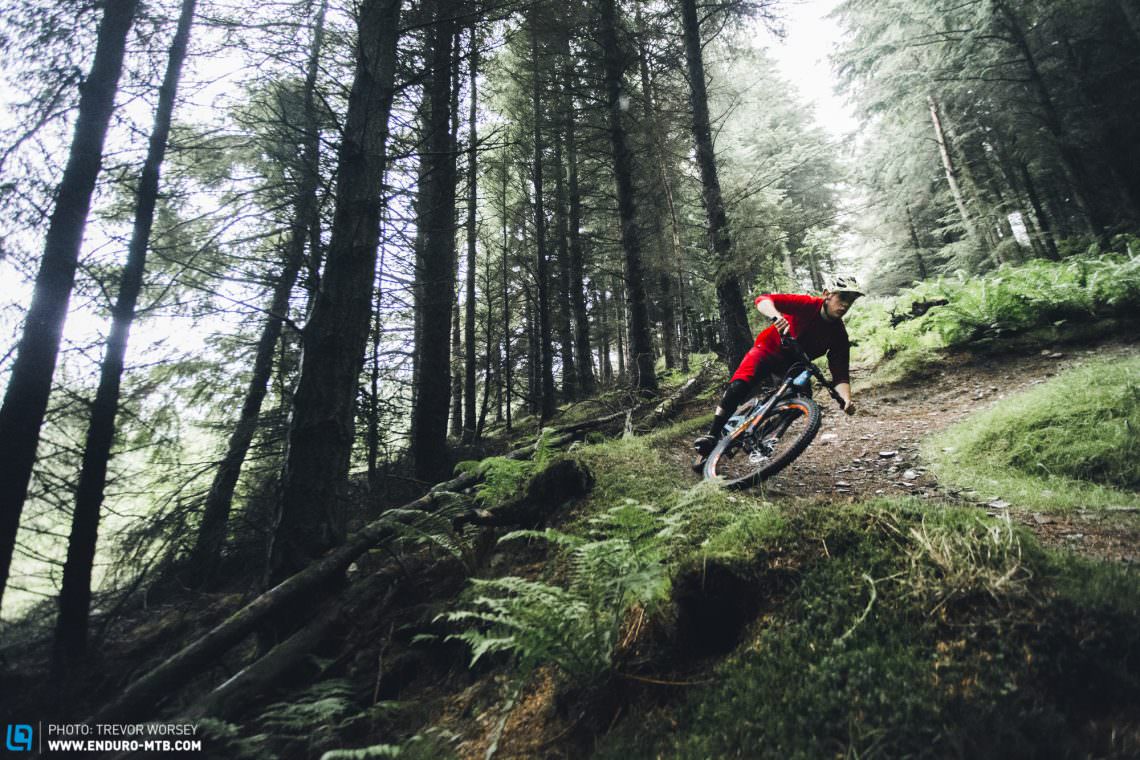
OK, let’s talk about the bearings
One of the principal arguments for riding an Orange is that they ‘are easy to maintain’. It’s very true, as a bearing swap takes minutes, not days of swearing, and everything is built for UK mud. If you want a low-maintenance ride, then the Orange is in a league of it’s own. We left this point until last, as the principal argument of long bearing life does the bike a disservice, the main focus should be it’s flipping rad to ride.
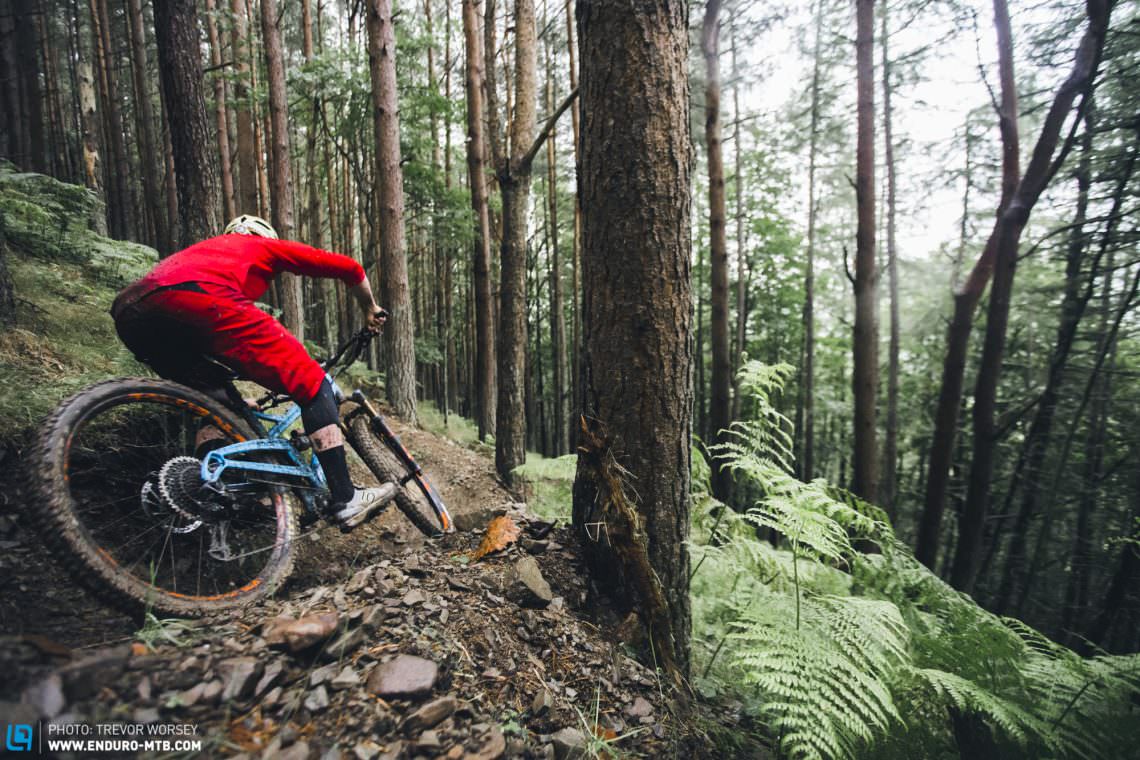
But what about the Orange Stage 5?
If you love the thought of owning an Orange, then the Stage 6 is a phenomenal bike. The only reason to not buy one is the formidable Stage 5 which is also a belter of a bike. While the Stage 5 may give up a degree in the head angle and a few mm’s in reach, it’s an electric climber that can power up the steepest climbs, before slaying the hill in that typical feral Orange fashion on the way down. For most UK trails and trail centres, the Stage 5 is probably the better bike, but if you want to stray onto DH trails, hit the alps or go against the clock, then the Stage 6 will be your poison. We would go as far as to say that the 29 er ‘Stage’ bikes are the best that Orange have ever made.
Conclusion
Sometimes in life it’s the simple things that are the best. Some will discount the Orange as a “heavy filing cabinet”, but be warned, in our testing the Stage 6 effortlessly chewed up and spat out many more expensive carbon rivals. While there may be bikes that are calmer though the chatter – there are few that are so rewarding at the limit as the Orange Stage 6 Factory. However, at £5,500 for the Factory Model, only a few will have deep enough pockets to enjoy this dream build model.
For more info head to www.orangebikes.co.uk
Did you enjoy this article? If so, we would be stoked if you decide to support us with a monthly contribution. By becoming a supporter of ENDURO, you will help secure a sustainable future for high-quality mountain bike journalism. Click here to learn more.
Words & Photos:








